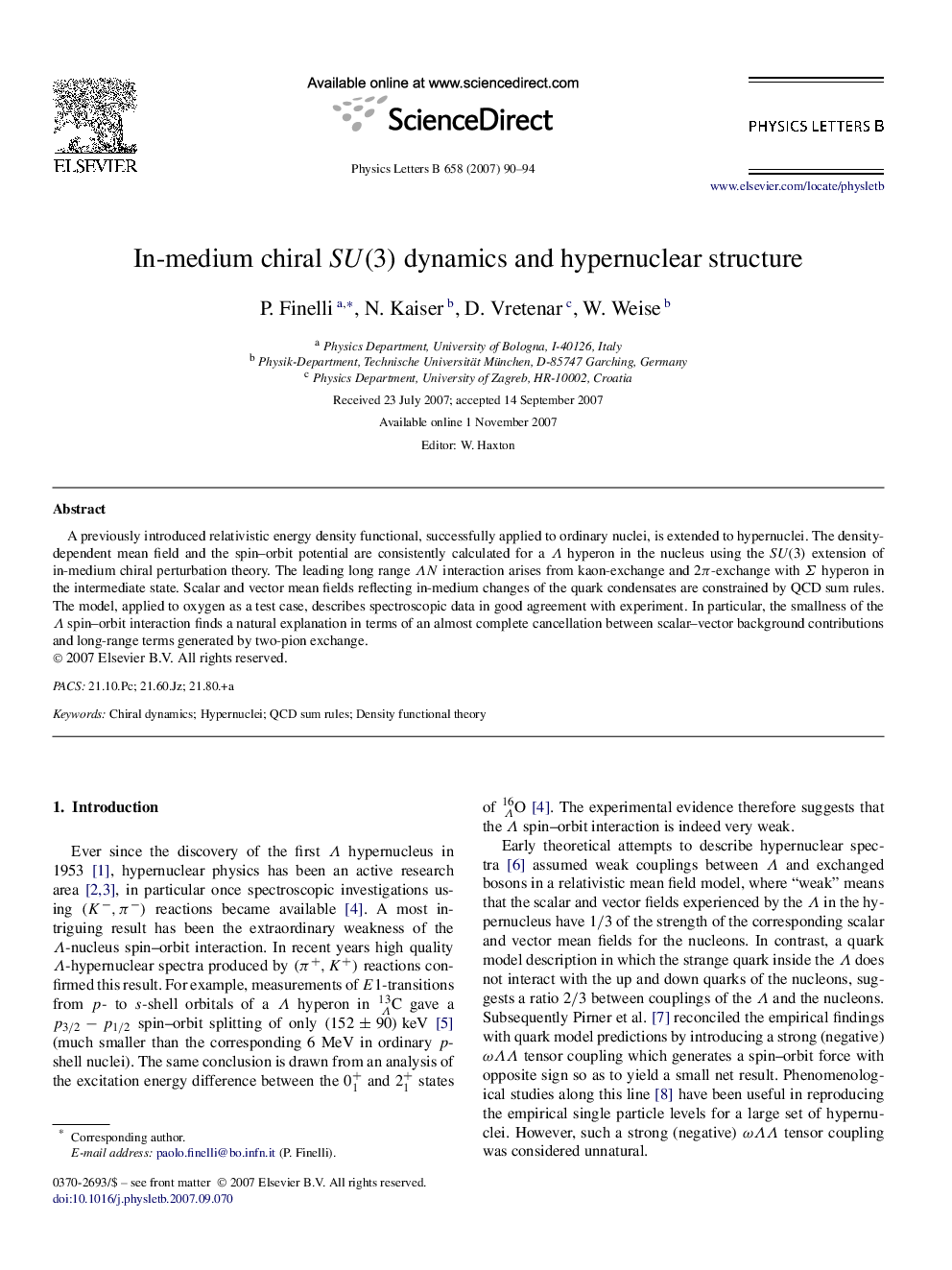| Article ID | Journal | Published Year | Pages | File Type |
|---|---|---|---|---|
| 8195845 | Physics Letters B | 2007 | 5 Pages |
Abstract
A previously introduced relativistic energy density functional, successfully applied to ordinary nuclei, is extended to hypernuclei. The density-dependent mean field and the spin-orbit potential are consistently calculated for a Î hyperon in the nucleus using the SU(3) extension of in-medium chiral perturbation theory. The leading long range ÎN interaction arises from kaon-exchange and 2Ï-exchange with Σ hyperon in the intermediate state. Scalar and vector mean fields reflecting in-medium changes of the quark condensates are constrained by QCD sum rules. The model, applied to oxygen as a test case, describes spectroscopic data in good agreement with experiment. In particular, the smallness of the Î spin-orbit interaction finds a natural explanation in terms of an almost complete cancellation between scalar-vector background contributions and long-range terms generated by two-pion exchange.
Related Topics
Physical Sciences and Engineering
Physics and Astronomy
Nuclear and High Energy Physics
Authors
P. Finelli, N. Kaiser, D. Vretenar, W. Weise,
